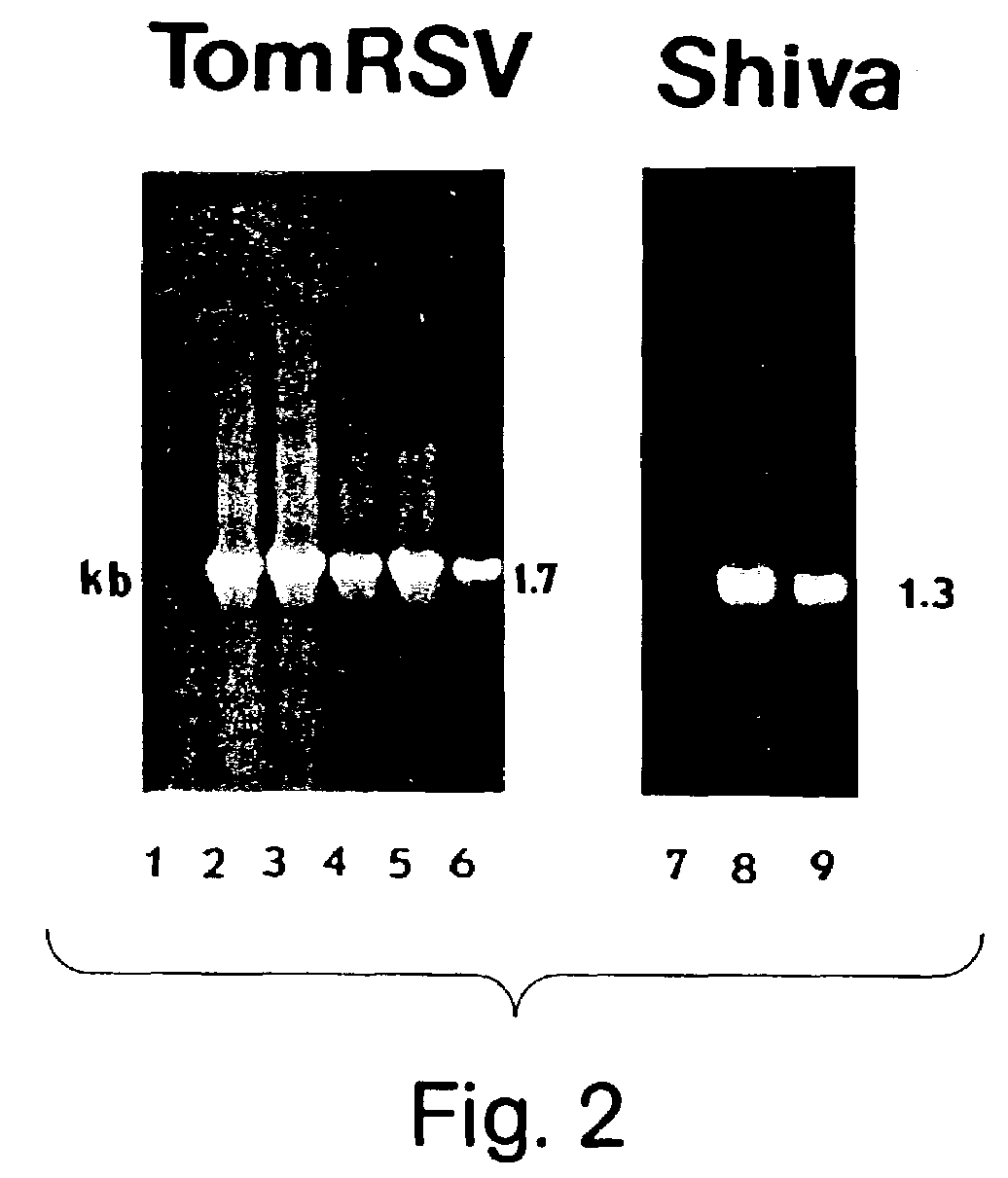Disease resistance in Vitis
a technology of disease resistance and vitis, which is applied in the field of disease resistance in vitis, can solve the problems of difficult and time-consuming, difficult, and difficult to introgress desirable traits into existing grape cultivars, and achieves the effects of reducing or minimizing, facilitating effective and economical protection, and increasing production efficiency
- Summary
- Abstract
- Description
- Claims
- Application Information
AI Technical Summary
Benefits of technology
Problems solved by technology
Method used
Image
Examples
Embodiment Construction
[0022]The drawings will first be described.
DRAWINGS
[0023]FIG. 1A shows the partial map of the T-DNA region of pBRS1.
[0024]FIG. 1B shows the partial map of the T-DNA region of pGA482GG / cpTomRSV.
[0025]FIG. 2 is a photograph showing the results of PCR amplified TomRSV-CP and Shiva-1 fragments from transgenic ‘Thompson Seedless’ grape plants. PCR analysis using TomRSV-CP primers are as follows: pGA482GG transformant (without the TomRSV-CP gene); lane 2, transformant 3-2; lane 3, transformant 3-3; lane 4, transformant 3S-2; lane 5, transformant 3S-6; lane 6, transformant 3SB-X. PCR analysis using Shiva-1 primers are as follows: lane 7, untransformed ‘Thompson Seedless’ plant; lane 8, transformant 4-3; lane 9, transformant 4S-2. Transgenic plants 3-2, 3-3, and 4-3, were obtained from A. tumefaciens infection alone. Plants 3S-2, 3S-3, 3SB-X, and 4S-2 were obtained from A. tumefaciens infection after microprojectile bombardment.
[0026]FIG. 3 is a photograph showing the results of a Southern ...
PUM
| Property | Measurement | Unit |
|---|---|---|
| pH | aaaaa | aaaaa |
| resistance | aaaaa | aaaaa |
| pest resistance | aaaaa | aaaaa |
Abstract
Description
Claims
Application Information
 Login to View More
Login to View More - R&D
- Intellectual Property
- Life Sciences
- Materials
- Tech Scout
- Unparalleled Data Quality
- Higher Quality Content
- 60% Fewer Hallucinations
Browse by: Latest US Patents, China's latest patents, Technical Efficacy Thesaurus, Application Domain, Technology Topic, Popular Technical Reports.
© 2025 PatSnap. All rights reserved.Legal|Privacy policy|Modern Slavery Act Transparency Statement|Sitemap|About US| Contact US: help@patsnap.com



